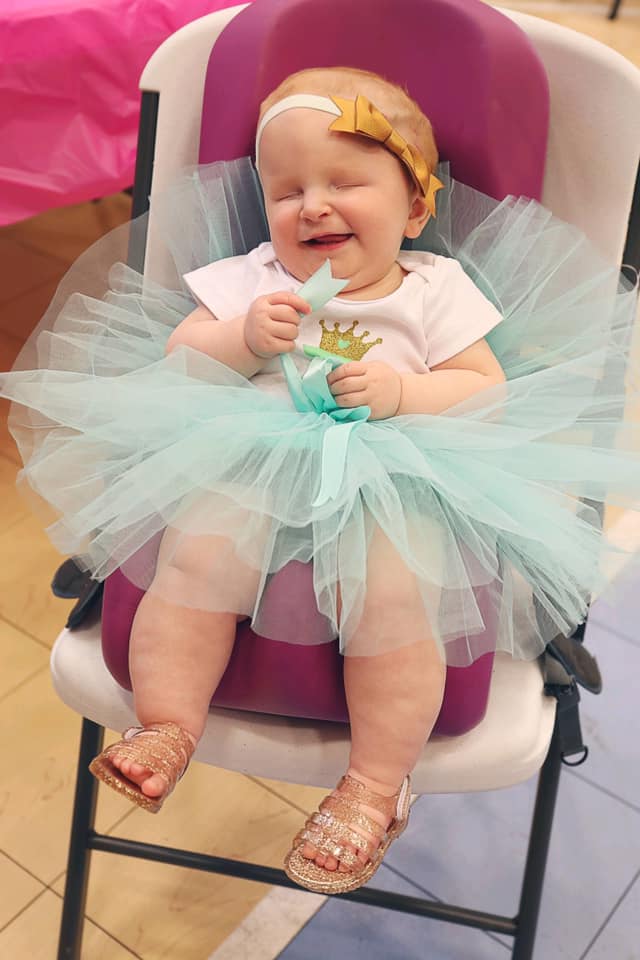Asian And Asian American Representation: Moving Beyond Stereotypes In Media

Table of Contents
Historical Context of Stereotypical Portrayals
The underrepresentation and misrepresentation of Asians and Asian Americans in media have deep historical roots, shaping how these communities are perceived both within and outside their own cultures.
The "Perpetual Foreigner" Stereotype
This pervasive stereotype casts Asian and Asian American characters as perpetually foreign, regardless of their citizenship or how long they've lived in the country. They are often depicted as lacking genuine connection to the dominant culture, always seen as "outsiders."
- Examples: Numerous films and television shows have perpetuated this, often depicting Asian characters with heavily accented English, limited cultural integration, or a constant emphasis on their "foreignness." Think of the comedic sidekick character who speaks in broken English or the villainous character whose evil is somehow linked to their Asian heritage.
- Effects: This stereotype contributes to feelings of alienation and othering among Asian and Asian Americans, negatively impacting their self-perception and societal integration. It also reinforces prejudice and xenophobia.
The Model Minority Myth and its Limitations
The "model minority" myth paints Asian and Asian Americans as inherently hardworking, intelligent, and successful, often presented as a monolithic group without internal diversity or struggles.
- Consequences: This stereotype ignores the significant socio-economic disparities within Asian and Asian American communities, overlooking the experiences of those facing poverty, discrimination, and other systemic challenges. It creates unrealistic expectations and pressure on individuals, and it can also be used to pit Asian communities against other minority groups.
- Impact: The myth erases the struggles and complexities of many Asian and Asian American individuals, reinforcing harmful comparisons and neglecting the multifaceted realities of their lives.
Other Harmful Stereotypes
Beyond the "perpetual foreigner" and the "model minority," other damaging stereotypes persist. These include the hypersexualized and submissive Asian woman, often reduced to an object of male desire, and the hyper-masculine and stoic Asian man, devoid of emotional depth. Nerdy or geeky Asian characters, while seemingly positive, are often confined to limited roles, reinforcing tropes of limited personality.
- Examples: These stereotypes are readily apparent in popular culture, from Hollywood films to video games and even children's cartoons. They contribute to harmful preconceptions about Asian and Asian American men and women.
- Impact: These tropes reinforce harmful gender roles and contribute to societal misunderstandings about Asian and Asian American identities. They limit opportunities and create barriers to authentic representation.
The Importance of Authentic Representation
Moving beyond harmful stereotypes requires a fundamental shift in how Asian and Asian American communities are portrayed in media. Authentic representation is not merely about inclusion; it's about accuracy, nuance, and diverse storytelling.
Amplifying Diverse Voices and Perspectives
Accurate media representation demands more diverse voices and perspectives behind the camera. We need more Asian and Asian American writers, directors, producers, and actors shaping narratives, ensuring authentic and relatable storytelling.
- Success Stories: The increasing success of shows and films featuring diverse casts and behind-the-scenes crews demonstrate the power of authentic storytelling. These productions resonate more deeply with audiences and create more engaging experiences.
- Importance of Diversity: The diversity of creative minds contributes directly to the breadth and depth of storytelling, allowing for a wider range of experiences and perspectives to be showcased.
Showcasing the Full Spectrum of Asian and Asian American Experiences
Authentic Asian and Asian American representation necessitates showcasing the full spectrum of our lived experiences. This goes beyond simply including characters; it means portraying the rich diversity of cultures, socio-economic backgrounds, and the multifaceted challenges faced within our communities.
- Nuanced Portrayals: We need characters that are complex, flawed, and relatable, not simply caricatures. Their stories should reflect the realities of the Asian and Asian American communities, demonstrating the range of identities and experiences within these diverse groups.
- Positive Examples: Some recent films and television shows have demonstrated the potential of nuanced storytelling, but there's still a long way to go to achieve truly equitable representation.
Challenging Stereotypes Through Positive Portrayals
Positive and realistic portrayals are crucial to counteract negative stereotypes. Showcasing complex characters with flaws and strengths, who are fully realized individuals, helps challenge assumptions and create a more accurate picture of Asian and Asian American communities.
- Complex Characters: Characters that exhibit both strengths and weaknesses, navigate complex situations, and represent a variety of experiences within the community are vital to creating authentic representation.
- Reflecting Reality: The portrayal of a wide range of experiences – including cultural practices, socio-economic challenges, and family structures – ensures authenticity and moves beyond reductive representations.
Strategies for Improving Representation
Improving Asian and Asian American representation demands proactive steps throughout the media industry, from production to consumption.
Increased Representation Behind the Camera
Increasing the number of Asian and Asian American individuals in positions of power within the media industry is paramount. This includes writers, directors, producers, and other key creative roles.
- Diversity Initiatives: Supporting initiatives aimed at increasing diversity in the industry, such as mentorship programs and scholarships, is essential. This will create a more inclusive environment and allow more authentic stories to be told.
- Impact of Leadership: Having Asian and Asian Americans in positions of power ensures that diverse stories are prioritized, and the narratives reflecting their experiences are more accurately represented.
Engaging with the Asian and Asian American Community
Collaboration and consultation with members of the Asian and Asian American communities are crucial to ensuring authenticity and avoiding the perpetuation of stereotypes.
- Cultural Advisors: Working with cultural advisors and community organizations helps guarantee accuracy and sensitivity in portraying diverse cultures and experiences.
- Community Input: Seeking feedback from the community ensures that the representation is both respectful and reflective of real-life experiences.
Promoting Media Literacy and Critical Thinking
Educating audiences to recognize and critique stereotypical portrayals is vital. Promoting media literacy empowers individuals to critically analyze the messages they receive and demand better from media producers.
- Educational Resources: Supporting resources and initiatives that promote media literacy will enable audiences to critically engage with media and question biases.
- Critical Discussions: Encouraging critical discussions about media representation will help to raise awareness and challenge harmful stereotypes.
Conclusion
Accurate and diverse Asian and Asian American representation in media is not simply a matter of political correctness; it's about creating a more equitable and just society. By addressing the historical context of stereotypes, embracing authentic storytelling, and implementing proactive strategies, we can collectively work towards a more inclusive media landscape. Let's continue to demand better Asian and Asian American representation, supporting media that genuinely reflects the richness and diversity of our experiences and challenging the stereotypes that have for too long defined our presence in the media. By actively seeking out and supporting authentic representations, we can contribute to a future where all communities are accurately and respectfully portrayed.

Featured Posts
-
 Plei Of Nba Pliris Analysi Ton Agonon Kai Toy Programmatos
May 12, 2025
Plei Of Nba Pliris Analysi Ton Agonon Kai Toy Programmatos
May 12, 2025 -
 Bilateral Anophthalmia A Comprehensive Guide For Parents And Caregivers
May 12, 2025
Bilateral Anophthalmia A Comprehensive Guide For Parents And Caregivers
May 12, 2025 -
 Everything You Need To Know About The Upcoming Crazy Rich Asians Series
May 12, 2025
Everything You Need To Know About The Upcoming Crazy Rich Asians Series
May 12, 2025 -
 New Calvin Klein Campaign Featuring Lily Collins See The Photos
May 12, 2025
New Calvin Klein Campaign Featuring Lily Collins See The Photos
May 12, 2025 -
 Estrategia Ganadera El Regalo De Uruguay Que Busca Revolucionar El Mercado Chino
May 12, 2025
Estrategia Ganadera El Regalo De Uruguay Que Busca Revolucionar El Mercado Chino
May 12, 2025
Latest Posts
-
 Eric Antoine Nouveau Chapitre Apres La Separation Un Bebe Avec Sa Nouvelle Compagne
May 12, 2025
Eric Antoine Nouveau Chapitre Apres La Separation Un Bebe Avec Sa Nouvelle Compagne
May 12, 2025 -
 Eric Antoine Vie Privee Apres Le Divorce Et Naissance De Son Enfant
May 12, 2025
Eric Antoine Vie Privee Apres Le Divorce Et Naissance De Son Enfant
May 12, 2025 -
 Jean Luc Delarue Antoine Dulery Revele Une Rencontre Desagreable
May 12, 2025
Jean Luc Delarue Antoine Dulery Revele Une Rencontre Desagreable
May 12, 2025 -
 Bilan D Audience La Roue De La Fortune D Eric Antoine Sur M6 Apres 3 Mois
May 12, 2025
Bilan D Audience La Roue De La Fortune D Eric Antoine Sur M6 Apres 3 Mois
May 12, 2025 -
 Rencontre Tendue Antoine Dulery Critique Jean Luc Delarue
May 12, 2025
Rencontre Tendue Antoine Dulery Critique Jean Luc Delarue
May 12, 2025
